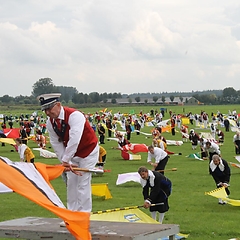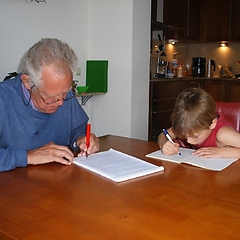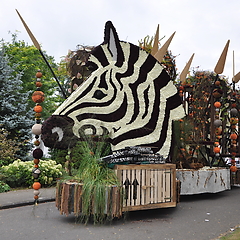The Cramignon is danced in eight villages in the border region between South Limburg and Belgium. It is a round dance in which boys and girls hold hands and move through the streets skipping and zigzagging to the cheerful sounds of Cramignon music. Traditionally, only single boys and girls are allowed to participate in the Cramignon, but over the years this has changed, and everyone is allowed to join in. The captain of the ‘jonkheid’ leads the way in the Cramignon, holding a bouquet of flowers (also known as the ‘rei-bouquet’) in his left hand and a girl in his other. Like a zigzagging chain of people, the Cramignon winds through the village. In some villages, the order is reversed, and a girl (called a ‘rei-maid’) goes first, followed by the captain of the jonkheid. In general, the jonkheid refers to the unmarried boys (in some cases also girls) of the village, aged 16 and over. In principle, all unmarried and/or non-cohabitants are members of the jonkheid and pay their membership fee at the annual Bronk.
In some places, the first Cramignon is traditionally danced in front of the church, with the priest taking the lead in the first Cramignon. During this first Cramignon, he hands over the rei-bouquet to the captain of the jonkheid, after which the Cramignon continues. If the Cramignon continues later in the day, the starting location is usually a local café, but during the dance, more and more people join in. In between, there are several resting places where one can have a drink and then – well rested – continue dancing. Finally, the Cramignon ends at one of the resting places mentioned above.
The dance is almost the similar in all villages. The Cramignon manifests itself on the Monday and Tuesday of the annual Bronk Feast, the multi-day celebration that follows the Sacrament Procession. When the Bronk ‘sets out’, the procession passes through the village and when ‘bronking’ takes place, this refers to the traditional festivities on the day of or days after the procession.
A few weeks after the Bronk, in some places the small Bronk is organised. This small Bronk is organised by and for the local children, imitating the Bronk and Cramignon of a few weeks earlier.



